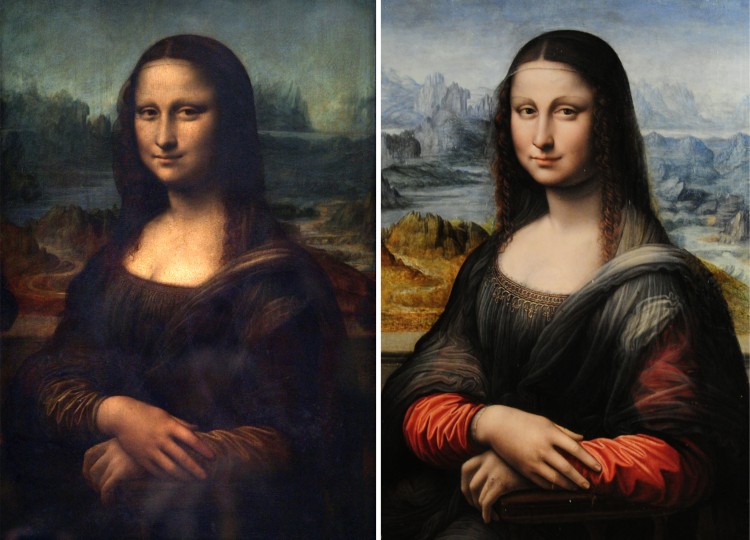According to Italian art historian Carla Glori, the face of the enigmatic “Mona Lisa” (also known as “La Gioconda”), painted by the great Renaissance master Leonardo Da Vinci, and the replica, the “Prado Mona Lisa” is the face of Bianca Giovanna Sforza. However, that claim does not convince those who have sustained for many years the belief that it is a portrait of Mona Lisa or Lisa Gherardini.
Based on research by Glori, Bianca Sforza was the wife of Galeazzo Sanseverino and the legitimate daughter of Ludovico il Moro and Bernadina de Corradis, who lived in Bobbio, in northern Italy.
The writer claims the portrait was painted from the Malaspina dal Verme Castle, Bobbio, from where there is an observable bridge, the Ponte Vecchio Bobbio (Old Bridge of Bobbio), visible over the sitter’s left shoulder.
“As far as I am concerned, I tried to offer a coherent thesis on the basis of seven coordinates in the background of the painting, which coincide with existing, or historically proven, elements together with the biography of the lady depicted in the artwork, which is Bianca Giovanna Sforza,” Glori said in an interview, posted on Oct. 30 on the altavaltrebbia blog.
Her research is expected to be published later this year.
According to Glori, the Bobbio bridge is the same as the one painted in da Vinci’s painting “Madonna Dei Fusi,” viewed from Mount Penice.
Diverging Opinions
Retired Oxford professor Martin Kemp, however, said the bridge in the portrait of Lisa del Giocondo and the historic Bobbio bridge do not seem very similar.
“There have been many attempts to identify the landscape as a specific location and I do not find the resemblance to the Bobbio bridge all that close,” Kemp said, according to The Daily Mail.
Lisa Gherardini (1479–circa 1542) was named La Gioconda after the name of her husband and was described as a Florentine woman from the family Gherardini.
The Italian painter and historian Giorgio Vasari (1511–1574) wrote that da Vinci’s “Mona Lisa” painting was a portrait requested by her husband Francesco del Giocondo of Florence.
Salai Replica
Glori believes that the copy of the Mona Lisa called the “Prado Mona Lisa,” recently attributed to da Vinci’s workshop, is painted by the artist Salai. In 1990, U.S. art historian Janice Shell and Italian archivist Grazioso Sironi found state archives in Milan, Italy, that Glori draws upon as evidence for her thesis.
The files discovered by Shell and Sironi indicate that there exists an inventory of goods from 1525 that belonged to Giacomo Caprotti, also known as Salai. Salai was one of Da Vinci’s pupils and died one year before the inventory was issued.
Among the assets was a painting of a woman registered as “Honda C” and then corrected to “La Joconda.” Shell and Sironi assumed it to be the famous “Mona Lisa” portrait by da Vinci. Glori now believes that very probably the inventory referred to a copy, namely the recently discovered “Prado Mona Lisa” and that this could prove that Salai was the artist, as the Italian news agency Adnkronos reported.
The original “Mona Lisa,” the one by Leonardo Da Vinci (1452–1519), is exhibited in the Louvre Museum in Paris.
The copy of the “Mona Lisa,” recently attributed to da Vinci’s atelier, will be exhibited until March 13 at the Prado Museum in Madrid, Spain.






